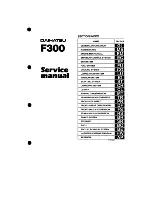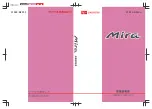
Driving in Mud, Sand, Snow, or Ice
When you drive in mud, snow, or sand, your wheels will
not get good traction. You cannot accelerate as
quickly, turning is more difficult, and you will need longer
braking distances.
It is best to use a low gear when you are in mud — the
deeper the mud, the lower the gear. In really deep
mud, the idea is to keep your vehicle moving so you do
not get stuck.
When you drive on sand, you will sense a change in
wheel traction. But it will depend upon how loosely
packed the sand is. On loosely packed sand, such as
on beaches or sand dunes, your tires will tend to
sink into the sand. This has an effect on steering,
accelerating, and braking. Drive at a reduced speed and
avoid sharp turns or abrupt maneuvers.
Hard packed snow and ice offer the worst tire traction.
On these surfaces, it is very easy to lose control.
On wet ice, for example, the traction is so poor that you
will have difficulty accelerating. And if you do get
moving, poor steering and difficult braking can cause
you to slide out of control.
{
CAUTION:
Driving on frozen lakes, ponds, or rivers can
be dangerous. Underwater springs, currents
under the ice, or sudden thaws can weaken the
ice. Your vehicle could fall through the ice and
you and your passengers could drown. Drive
your vehicle on safe surfaces only.
4-21
2008 - Isuzu 290/370 Owner Manual
Содержание 2008 i290
Страница 122: ...NOTES 2 42 2008 Isuzu 290 370 Owner Manual...
Страница 125: ...NOTES 3 3 2008 Isuzu 290 370 Owner Manual...
Страница 126: ...Instrument Panel Overview Manual Transmission shown Automatic Transmission similar 3 4 2008 Isuzu 290 370 Owner Manual...
Страница 168: ...Radio s AM FM Radio Radio with CD MP3 3 46 2008 Isuzu 290 370 Owner Manual...
Страница 188: ...NOTES 3 66 2008 Isuzu 290 370 Owner Manual...
Страница 363: ...Engine Drive Belt Routing 2 9L and 3 7L Engines 6 15 2008 Isuzu 290 370 Owner Manual...
















































